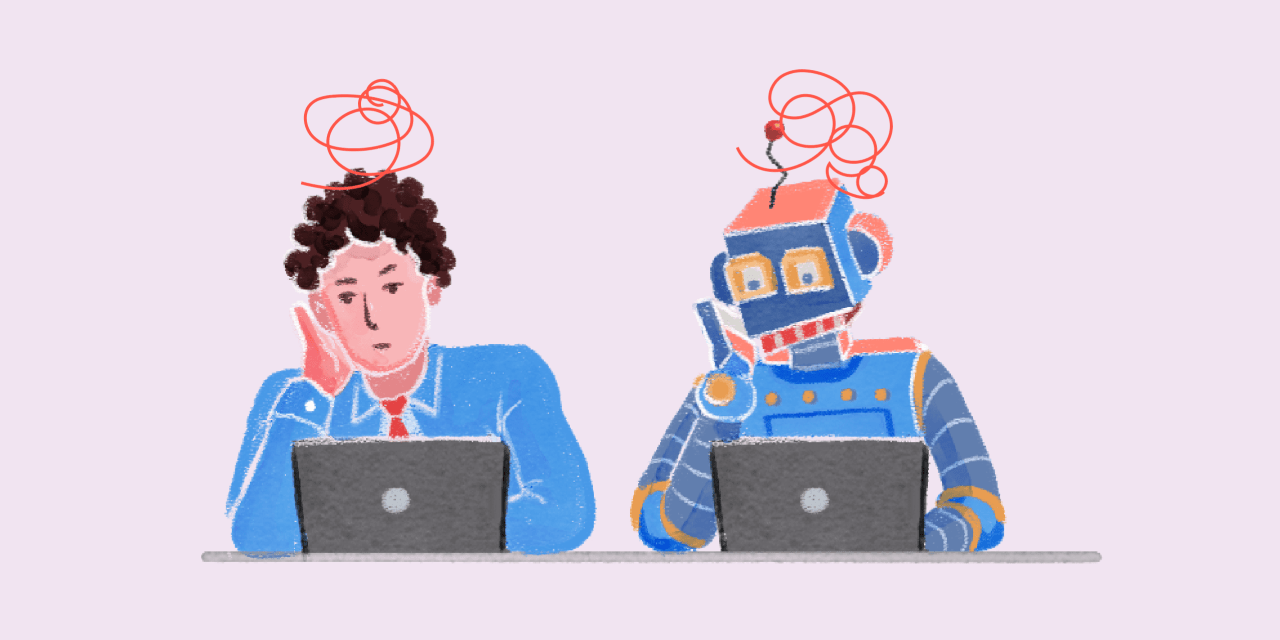Is AI your smartest coworker, or greenest intern?

Generative AI tools were first purported to transform modern workflows and eventually do some people’s jobs entirely. But with the way most workers are using the tools today, that remains far from reality, workplace experts say.
While some credit a lack of training and AI education, others say it’s a larger problem with thinking of AI as a potentially highly-skilled and intelligent worker when it’s really like “your greenest intern,” said Emily Rose McRae, senior director analyst at Gartner. “It would not be a good idea to hire a bunch of interns to do what was previously highly skilled work.”
Right now over 60% of workers who use AI say they use it to double-check their work, rather than actually complete tasks like initial project research or data analysis, according to a report from Slingshot and research firm Dynata.
Other recent surveys also suggest AI is far from producing the initially predicted productivity gains, and in some cases, is even making working less productive. Almost 80% of workers who use generative AI in their jobs said it has added to their workload and is hampering their productivity, according to an Upwork survey among over 2,500 full-time workers, freelancers and executives. Those workers said they’re spending more time out of their day reviewing AI-generated content and learning how to even use the tools.
Gartner recently surveyed workers on what they use AI for every day, with the most common responses being to help them find information or data needed to do their jobs — rather than content generation or automation, McRae said.
And while AI is useful in collecting and analyzing information, it’s still prone to hallucinate, or give outputs with inaccurate information, necessitating double-checking. Outputs can also lack the nuance and context a human would give, and “that’s actually where we have a big risk, because what generative AI doesn’t do is get into details you might not ask about. This is where you not knowing what you don’t know is a problem,” McRae said.
Many organizations integrating AI tools are still in experimental phases, and some say they so far have helped alleviate some employees’ workloads and time constraints.
“It’s not about chasing the latest AI hype but about blending tools that support existing workflows while providing room for exploration,” said Kira Makagon, chief innovation officer at RingCentral, an AI communications platform.
RingCentral’s marketing team is currently leveraging a range of AI platforms for personalized content creation to help accelerate the timeline of campaigns, she said.
In other parts of the organization, like contact centers, AI tools are proving incredibly helpful in providing customer support and sales agents with real-time assistance for smoother interactions, she said.
“While we may not be in the ideal state of the ‘perfect’ intelligent coworker just yet, the possibilities ahead are inspiring. For now it’s all about using AI thoughtfully and with a clear purpose,” she said.
For some organizations currently implementing the tools, inadequate training is a key issue. “AI training is essential to the technology’s success in the workplace, just like any other technology or tool,” said Dean Guida, founder of Slingshot. “If employees don’t know how to use the technology or don’t feel confident in their skills, they’re not going to use it. They’ll default to the way they’ve always done things,” Guida added.
Ultimately, today’s AI tools stand to make workers’ jobs a little better and potentially easier, but aren’t ultimately making them that much more productive.
McRae gives ambient scribing in healthcare as an example, where an AI tool can listen to a conversation through a microphone and summarize and transcribe the interaction. For clinicians, documenting patient interactions is a large part of the job, and ambient scribing allows them to give their undivided attention to patients while alleviating some of their workload, she said.
“It doesn’t change their actual total, overall productivity. But what it does is it makes the doctor a lot happier, because they don’t have to transcribe notes or type them up while they’re in their appointments,” she said.


